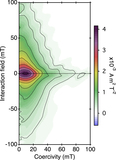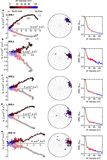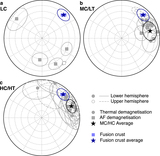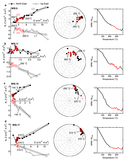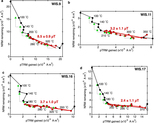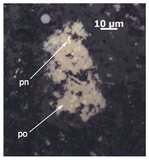Image Details
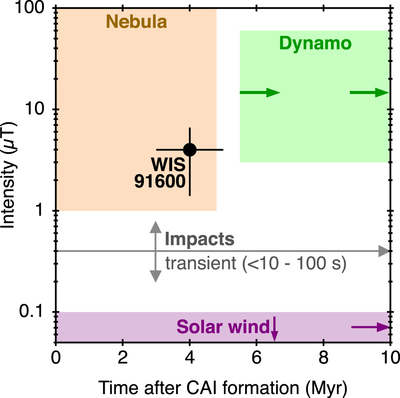
Caption: Figure 11.
The timings and predicted intensities of different fields that could potentially have imparted remanences to chondrites in the first 10 Myr of the solar system. The solar wind field (purple) is <0.1 μT and continued after 10 Myr after CAI formation (purple arrow; Oran et al. 2018). Dynamo activity (green) is delayed until >5.5 Myr after CAI formation in a partially differentiated C2-like asteroid (Bryson et al. 2019a) and could have continued after 10 Myr after CAI formation (green arrow). The range of possible paleointensities encompasses the values recovered from paleomagnetic measurements of a number of CV chondrites (Carporzen et al. 2011; Gattacceca et al. 2016). Impacts (gray) are sporadic and could feasibly occur at any time during the early solar system and produce transient fields (lasting <10–100 s; Crawford & Schultz 1999, 2000). The intensity of these fields depends strongly on the distance of the meteorite from the point of impact and the energy of the impact. The nebula field (orange) persisted until sometime between ∼3.7 and ∼3.8–4.8 Myr after CAI formation (Wang et al. 2017; Schrader et al. 2018; Fu et al. 2020), and the calculated intensity of the instantaneous component ranges between ∼1 and 100 μT with heliocentric distance in the solar nebula (Bai & Goodman 2009, Figure 12). The possible impact age of WIS 91600 (recovered from the measured precipitation ages of type 2 calcites in heated and unheated CM, CI, and C2 chondrites; Fujiya et al. 2012, 2013; Jilly et al. 2014) and our recovered average HT paleointensity are included as the black point. This intensity, timing, and duration of remanence acquisition are consistent with the nebula field as the source of the remanence in this meteorite.
Copyright and Terms & Conditions
© 2020. The American Astronomical Society. All rights reserved.


